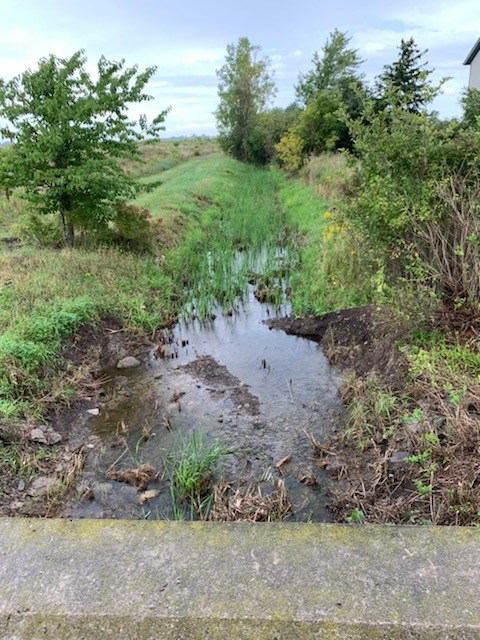
At the request of Regional Coun. Gary Zalepa, the region has prepared a report on the Cole Drain clean-up operation that was close to the Line 5 landfill site.
Zalepa told The Local he wanted it made clear the region looked at the possibility of it being caused by a leachate spill from the dump, and quickly eliminated it as a source.
The region’s report, prepared for a public works committee meeting Tuesday, said the nature of the material was unknown at the time of the spill, although regional waste disposal staff “observed NOTL staff take samples of the material,” and described it as being “somewhat viscous compared to landfill leachate, which is generally brown in colour and more liquid in nature.”
Regional staff were on-site by about 1 a.m. Aug. 18, and “remotely turned off the landfill leachate collection system pumps” as a precautionary measure in the event that the landfill was the source.
After meeting with an MECP representative and NOTL staff on-site, regional staff went into the landfill and “as a precaution turned off the pumps manually, just in case the pumps were turned back on by staff.”
Regional staff “drove along the path of the force main line to check if there were any breaks, inspected chambers along the force main and ditches but did not detect anything out of the ordinary during the inspection. Staff’s impression was that the spill was not landfill leachate due to its appearance, quantity and direction of flow. At approximately 2:30 a.m., staff informed the MECP and NOTL staff that they could not find any issues at the landfill or anywhere along the leachate collection system infrastructure.”
The collection system pumps within the landfill remained turned off until about 2 p.m. on Aug.19, the report said.
Regional staff were not asked and did not participate in the clean-up activities, which were being managed by NOTL staff, according to the report.
However, public works staff did assist the town “with determining disposal options. Before disposal of the material at a Niagara Region wastewater treatment plant would be permitted, the material needed to be tested and those results reviewed,” Peter Criscione, communications consultant with the region, said in an email to The Local.
The Town of NOTL submitted test results to Niagara Region on Aug. 29 for the analysis of four samples taken from the ditch impacted by the material, Criscione said, and all the laboratory results for BOD for these four samples were less than 100 mg/L. Biological oxygen demand (BOD) generally represents how much oxygen is needed to break down organic matter in water. BOD is used in wastewater treatment plants as an index of the degree of organic pollution in water.
The sewer use bylaw limit for BOD is 300 mg/L for regular discharges to the sewer system. Higher limits are permitted for hauled sewage disposals that are delivered to directly to a wastewater treatment plant, he said, but the test results submitted by NOTL indicated that the BOD values were much less than the bylaw limit.
Although the region had to know the contents of the drain before accepting the material at its Lakeshore Road and Port Weller treatment plants, it was not about to disclose it, saying the town “had the testing performed and would be the best source for this information.”
Niagara Region staff “reviewed the test report and concluded that the material contains substances that would be accepted and treated by a sewage treatment plant.”
The material would have received “full treatment” at both treatment plants, but the cost had yet to be determined, the region told The Local.
“The volume will be used to calculate any charges to the municipality,” but the region didn’t have that information at that time and had not calculated any charges.
Zalepa explained according to regional policy the company dropping off the material pumped from the Cole Drain would be charged by volume, and that
cost would be passed on to the town.